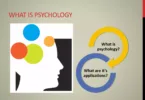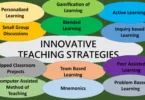Testing, assessment, and evaluation play a crucial role in education. This comprehensive blog post will examine the key aspects, best practices, and effective implementation of tests, assessments, and evaluations to enhance student learning and teaching quality.
Tests, assessments, and evaluations are essential tools for students and teachers. Not only do they provide a way for educators to measure student progress, but they can also help identify areas of strength and weakness so that further improvements can be made.
Using these tools, teachers can help foster a sense of accountability and responsibility in their students, leading to better learning outcomes and higher levels of engagement. Using tests, assessments, and evaluations can be a powerful tool for student learning.
For example, tests can help students focus on the content they need to learn, while assessments and evaluations can provide feedback on their comprehension and performance. By providing immediate feedback on student performance, teachers can help students make meaningful improvements in their learning.
1. Defining Tests, Assessment, and Evaluation
1.1 Tests
Tests are instruments or systematic procedures designed to measure a student’s knowledge, skills, or abilities in a subject area. For example, a math test may contain multiple-choice, short-answer, and word problems to assess a student’s mastery of arithmetic operations. An English test may have essay questions, passages for reading comprehension, and prompts for writing skills. Well-designed tests align closely with the curriculum content and instructional goals.
1.2 Assessment
Assessment involves systematically gathering information and data about student learning and performance. It is broader than testing and includes teachers’ methods to observe, measure, and evaluate student learning progress and outcomes. For instance, assessments can include formal tests, quizzes, projects, lab reports, presentations, homework assignments, class participation, and more. They provide ongoing checks for understanding throughout instruction.
1.3 Evaluation
Evaluation is making judgments about student learning and performance based on assessment data. It involves interpreting scores and communicating an overall value judgment on achievement. Teachers examine student assessment results to evaluate strengths and weaknesses. They use this analysis to provide meaningful feedback and modify their teaching approaches.
2. Purposes of Testing, Assessment, and Evaluation
2.1 Monitor Student Progress
Ongoing tests, assessments, and evaluations allow teachers to track student learning, identify knowledge gaps, identify strengths and weaknesses, and determine who needs help in certain areas. For example, a pre-test at the start of a unit reveals students’ baseline understandings. Regular quizzes help gauge if they are grasping key concepts during lessons. A summative test determines overall mastery of the content at the end.
2.2 Evaluate the Effectiveness of Teaching
Student test and assessment performance provides feedback to teachers on the effectiveness of their instructional methods and guides improvements. If class-wide results on an end-of-unit test are poor, the teacher reflects on how they presented the material and areas to adjust moving forward. Strong results reinforce the use of teaching strategies that worked well.
2.3 Place Students
Test scores help determine student placement in appropriate programs or class levels. Evaluations facilitate grade promotion and retention decisions. Students may qualify for accelerated courses based on high achievement. Those struggling may receive remedial services or repeat a grade if mastery is inadequate.
3. Characteristics of Good Tests and Assessments
3.1 Validity
A valid test or assessment measures what it is intended to measure accurately. The content aligns closely with learning objectives. For example, a math test with word problems and scenarios has higher validity than one with just computation to assess real-world application skills.
3.2 Reliability
A reliable test produces consistent, dependable results each time it is administered. Student performance is attributed to mastery, not ambiguity, in questions. Scores are unaffected by unrelated factors like testing conditions or the clarity of directions. A reliable multiple-choice exam will yield similar outcomes across different classes.
3.3 Objectivity
Objective tests minimize subjectivity in grading. Scoring rubrics and answer keys ensure an unbiased evaluation of student work. Unlike an essay graded solely on the teacher’s perception, a math test has clear right and wrong responses to quantify performance. Checklists allow objective assessment of art, music, and physical education skills.
4. Types of Tests and Assessments
4.1 Formative Assessments
Ongoing, often informal checks for understanding during instruction, E.g., quizzes, observations, and Q&A sessions on Give immediate feedback to adjust the teaching. If a practice quiz shows students struggling with a concept, the teacher can reteach that skill before moving forward.
4.2 Summative Assessments
Formal evaluations at the end of a unit, term, or course to measure mastery and achievement. E.g., exams, papers, and projects. A research paper requires synthesizing multiple skills learned over time. A final exam evaluates the retention of key course content.
4.3 Diagnostic Assessments
Pre-assessments determine baseline knowledge and skills before beginning instruction. Identify strengths, weaknesses, and gaps. A math diagnostic exam would pinpoint skills students have or have not mastered from prior grades. Teachers design learning activities to target weak areas.
5. Best Practices for Test Design
5.1 Clear Directions and Expectations
Provide concise instructions on how to complete the test or assessment properly. Communicate time limits, question types, scoring rules, materials allowed, etc. Removing confusion over procedures allows students to focus on demonstrating content mastery.
5.2 Organized, Logical Structure
Design the test in an intentional sequence, moving from easier to harder questions. Group related items together in sections. Tests that jump randomly from advanced concepts to the basics can be confusing and fail to build knowledge systematically. Move through the material in a purposeful flow.
5.3 Variety of Questions
Use diverse question types suited to assessing different knowledge and skills. Mix multiple choice, short answer, essay, performance tasks, etc. Varying question formats engage students in active processing and better evaluate well-rounded abilities.
6. Preparing Student Purpose Tests and Assessments
6.1 Communicate Purpose
Explain the specific skills, knowledge, and objectives the test aims to measure. Help students understand why the test matters for their learning progress. Providing context and significance increases motivation and effort.
6.2 Teach Test-Taking Skills
Provide strategies for effectively taking different test formats, managing time, avoiding mistakes, following directions, showing work, etc. Based on the exam structure, explain best practices for multiple choice, short answer, open-ended response, etc.
6.3 Alleviate Anxiety
Ease student stress and create a positive environment. Ensure they feel supported so they can perform at their best. Clarify expectations and share tips to calm nerves. Emphasize doing one’s best over purpose. Provide reassurance and perspective on the purpose of assessments.
7. Providing Meaningful Feedback on Assessments
7.1 Identify Strengths
Note areas where the student performed well to encourage continued effort and build confidence. Praise the use of effective strategies. Recognizing progress and successes reinforces key learning goals and self-efficacy.
7.2 Pinpoint Growth Areas
Give specific guidance on where the student needs more practice or development. Focus on discrete skills to work on. Rather than generic criticism, tailor feedback to precise concepts or procedures needing improvement.
7.3 Support: Next Steps
Based on your evaluation, suggest ways the student can improve moving forward. Recommend actions to take, resources to use, or tailored interventions. Feedback, coupled with strategies and support, empowers students’ growth.
8. Using Test/Assessment Data to Improve Instruction
8.1 Reflect on Results
Analyze patterns in student responses. Consider where learning gaps exist overall and for particular objectives, question types, skills, etc. Look beyond total scores to identify strengths and problem areas in mastery of standards.
8.2 Adjust Teaching Approaches
Rethink areas of weak performance. Modify instructional methods, materials, pacing, emphasis on concepts, differentiation strategies, etc. Let the test results guide how you adapt instructional plans to support student learning needs better.
8.3 Reteach/Reassess
Provide targeted reteaching and additional practice for skills and knowledge where students struggle. Reassess student mastery after implementing instructional improvements. Close learning loops by circling back to re-instruct challenging content before moving forward.
Conclusion
Well-designed tests, thoughtful assessments, and reflective evaluation processes are integral to maximizing meaningful student learning and the continual improvement of teaching. This in-depth exploration of their key purposes, characteristics, types, implementation strategies, and best practices provides a robust framework for elevating instructional quality.






